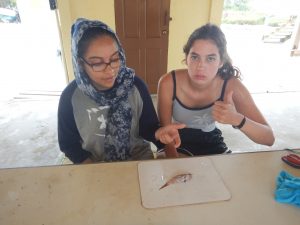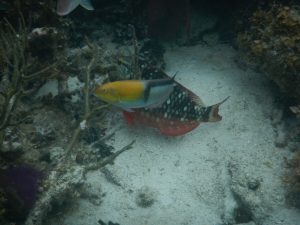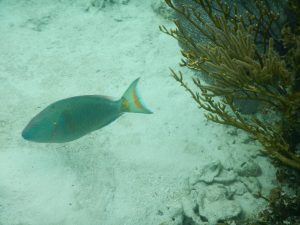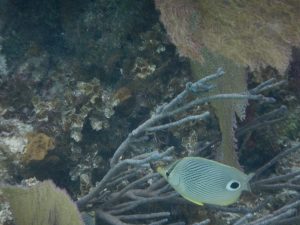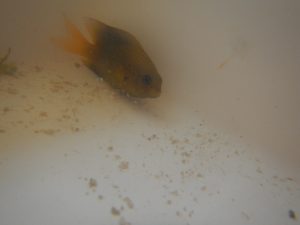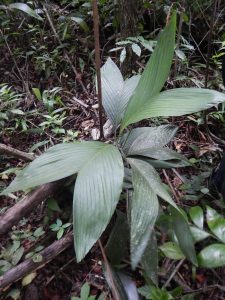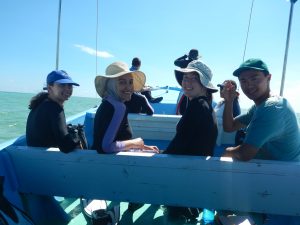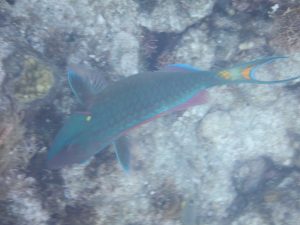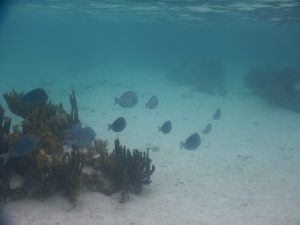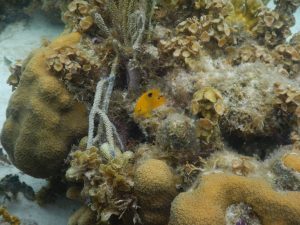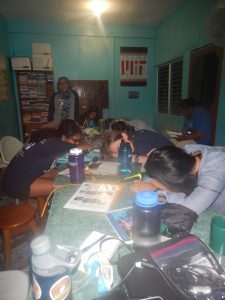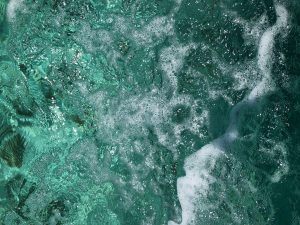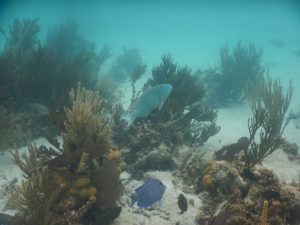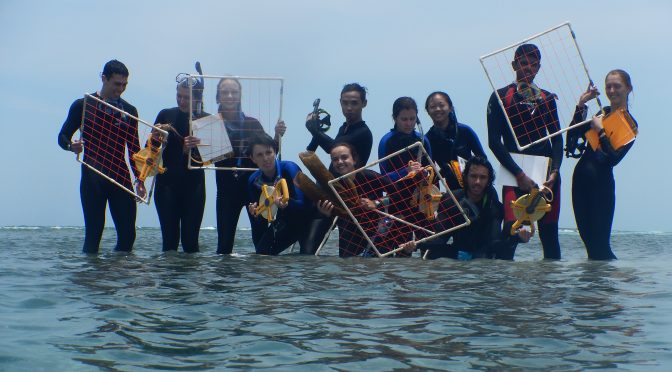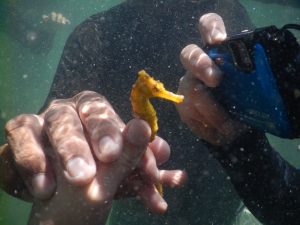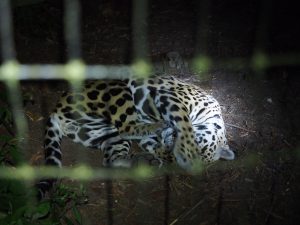Today was the one day at Glover’s that I woke up before sunrise, to finish packing my bags and to take a shower before our journey back to Houston. After the last delicious breakfast prepared by the kitchen staff, we left the atoll with all our luggage and headed to Belize City.
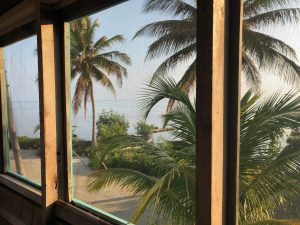
On the way there, we stopped at Carrie Bow Island, which is a research institution run by the Smithsonian. A researcher on the island told us a little bit about her work, and how she is raising hybrid corals in tanks. These hybrid corals occur naturally in the waters surrounding the island, but they are of particular interest to her because this hybrid is particularly hardy and is somewhat resistant the the higher temperatures that usually cause most corals to bleach. Perhaps this research may help us find ways to preserve and even repopulate the rapidly declining coral population in the wild.
But before we could arrive at our final destination, we had one more stop to make. We went to Twin Caye (which I thought was spelled like Twinkie, but anyways, life is full of disappointments) to snorkel around the mangroves. Mangroves are trees that are able to live in salt water, and have aerial roots called prop roots that help them get oxygen. These mangrove prop root communities serve as homes for animals and even as nurseries for some young. We saw fire sponges growing off the roots of some of the trees, and I am fairly certain i saw a Sergeant major fish (Abudefduf saxatilis) no bigger than three inches swimming around somewhere in there. I believe I also saw an aggregation of brown chromis fish (Chromis multilineata), but I wasn’t 100% sure because the water wasn’t very clear, and also because they swam away after I started looking at them for too long.
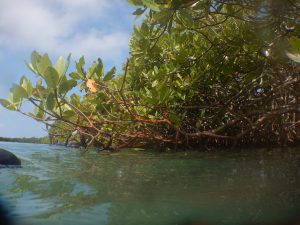
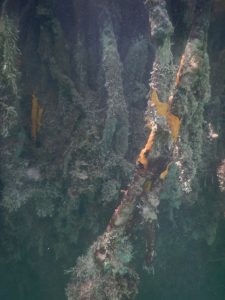
Back in Houston, after we said our overly dramatic goodbyes to one another (fine, after MY overly dramatic goodbyes), my mom asked me what food we ate while on the research stations. I told her that we ate tons of beans and that I didn’t want to eat anymore beans for at least a month, if not more. She then proceeded to laugh hysterically, because she had a Colombian beans and rice dish waiting for me at home. Regardless, I was just grateful to be home with my family, in an air conditioned house and in clean clothing.
I really appreciate the fact that our last blog is due on June 1st, because I would like to take these next few days to reflect upon our trip and everything we learned from it, tropical field biology-wise and other things as well.


